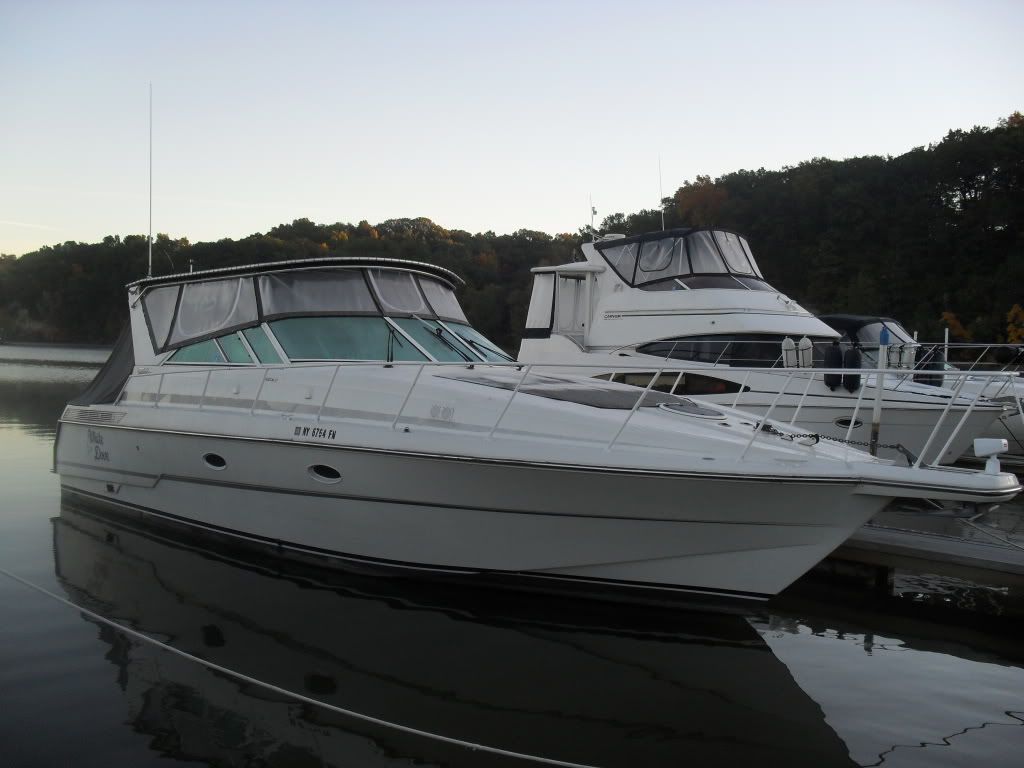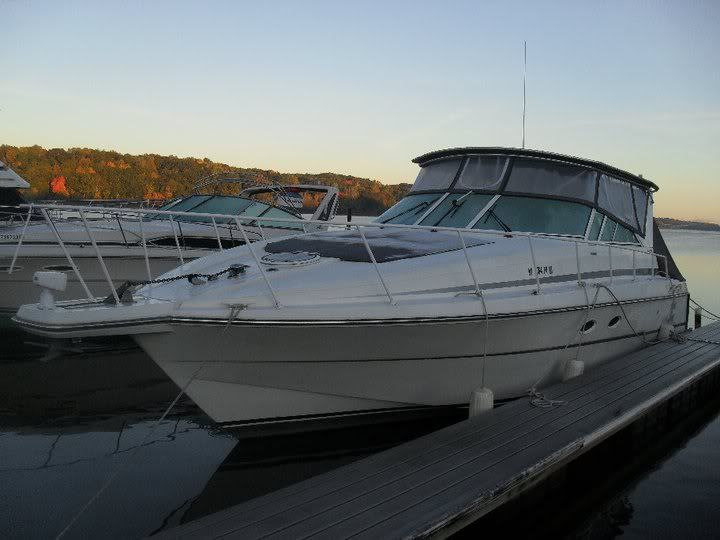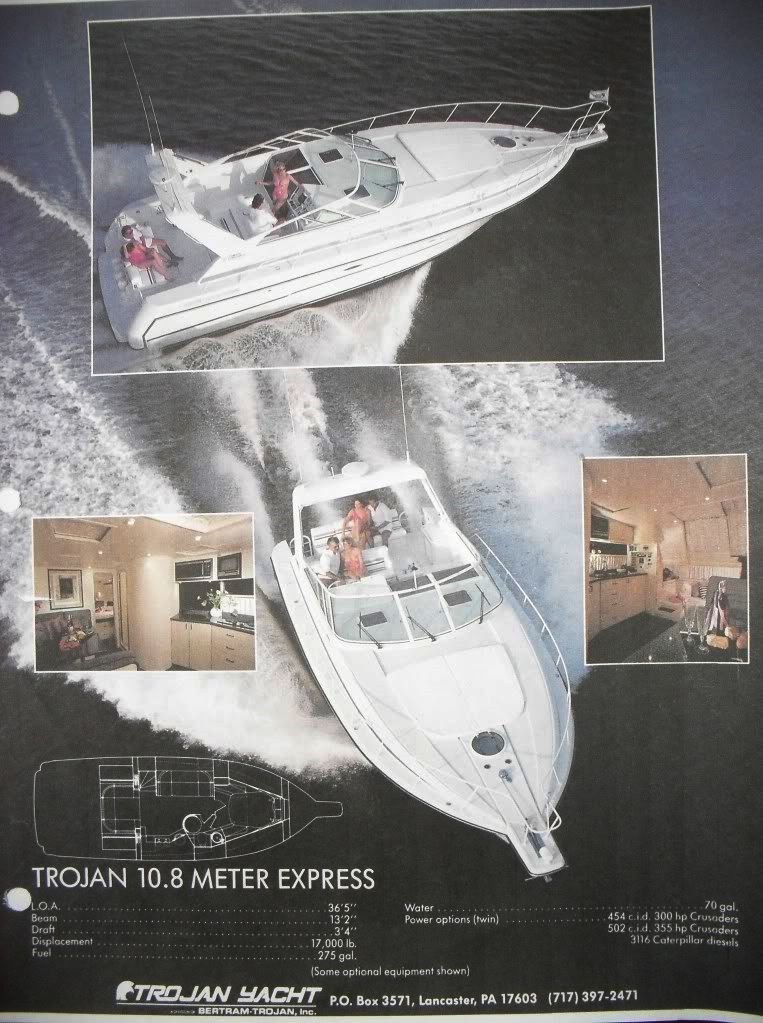10.8 Meter International Express Hull
While Trojan was designing an entirely new boat design, they knew that they had big shoes to fill with the amazing Delta-Conic design. Although they were using Fulvio de Simoni for the design and layout, they wanted to take another path for the underwater design. And although Trojan had received a good reputation with the Delta Conic, they knew that one company really had the best, and most notorious reputation for hull designs, and that company was Bertram. Trojan executives decided to utilize David Napier, a well-known Bertram designer, who designed Bertram's 28, 30, 33, 35, 37, 38 III Convertible, 54, and 60 foot yachts. Trojan approached Napier with their requirements, which included continuing with the Delta-Conics good rough-water capabilities and inherent stability, but they also wanted Napier to improve speed and efficiency. Napier had just designed the Bertram 37 Convertible. Bertram during that time was also looking to change some inherent problems with their deep-v design's instability while at rest with beam sees and requirements for large horspower to move the deep v-design. The 37B utilized a shallower deadrise (18 degrees) and larger chines running the length of the hull.
The hull of the 10.8 Meter has many similiarities to some Bertrams (especially the Bertram 37 convertible from my research) with a very sharp entry, a 18 degree deadrise, and shallow keel. You will also see a chine that extends from the bow to the stern (although nowhere near as large as the delta-conic). The chine also arches up toward the bow, a significant distance from the water line, with a cut-away forefoot.
NOTE: The above information has been updated by "Boatbuilder" Charlie, who was senior managment at Trojan during the time of this boat's build. He corrected the above and stated that
Lee Dana, the VP of Engineering at Bertram, and Dave Napier's boss, was the sole designer of the 10.8 Meter Express's hull. Charlie stated that there was one company that had the reputation for the best hulls anywhere, and that was Bertram, and that is why Trojan recruited Lee Dana to design this Trojan International's new hull.
Personal Experience
I've owned and operated the boat for two summers now. Having previously been on 10 Meters, and having an 11 Meter moored two slips down, I can try to give you the differences between the boats.
First, the 10.8 Meter Express should have more horsepower than is currently provided. The 10.8 Meter Express came standard with the Crusader 454 (350 HP) and a 2.5 reduction through the V-drive. The other engines available was a 502 (355 HP) and a 300 hp 3116 Caterpillar Diesel ($40,000 upgrade) With its deep-V, it does take power to get it out of the water. Additionally, a subject I will discuss later, it is a V-drive design with the motors further aft than the 10 and 11 boats. I installed 30X12 DF, which has made a world of difference getting the bow into the water.
As far as stability, the dockside stability of this boat is unmatched by every other boat at the marina except the 11 Meter. I would give the 11 Meter the edge, as we did experience 40 to 50 MPH winds from IRENE and the 11 Meter did not even move, while the 10.8 Meter rocked slightly. The other boats in the marina were rocking and bucking wildly.
Open water stability is a different story. I've been out with 3 to 4 foot beam seas and the 10.8 Meter Express will rock significantly more than a 10 Meter. Although not completely uncomfortable, you will lose everything sitting on your beverage table.
As far as underway, I had an opportunity to make a run from Oswego to Rochester (about 60 miles) in 20-25 knot headwinds, producing 3 to 4 foot, short frequency waves, with an occasional 5 footer. I was cruising between 19 and 21 mph at 3400 rpms. My wife had forgotten to secure some items on a tray sitting on the sink area up top. After about 5 minutes of run time, I realized that the items were not secured. They had not fallen down and slid only slightly around on the tray. The boat never slammed and the ride was completely dry. Matter of fact, I walked away from the helm for about 15 seconds and the boat never adjusted course. The boat would probably run smoother with a higher torque set-up, as I did lose some significant RPMs when running through a larger, short frequency 4 footer.
The boat does not appear faster or more efficient than the delta-conic hull. Speed at full 4400 RPM (again with the 454 set-up and a 1:2.5 reduction) is about 28 to 29 MPH. Fuel usage is about .75 to .85 mpg, although this is without a fuel flow meter. I have not had the boat weighed, however, reported weight was 20,000lbs with partial fluids. I would say with my hard-top, the number is probably higher.
The boat's strength is its manners while running rougher water. I have run an inlet where smaller boats are having severe difficulty and this boat has been very steady. However, Trojan's goal of a faster and more efficient hull, in my opinion, was not achieved.
In my opinion, a set of lightweight Yanmar diesels (ie the 370 hp 8LVs) would make a world of difference, and would make this great boat truly awesome




